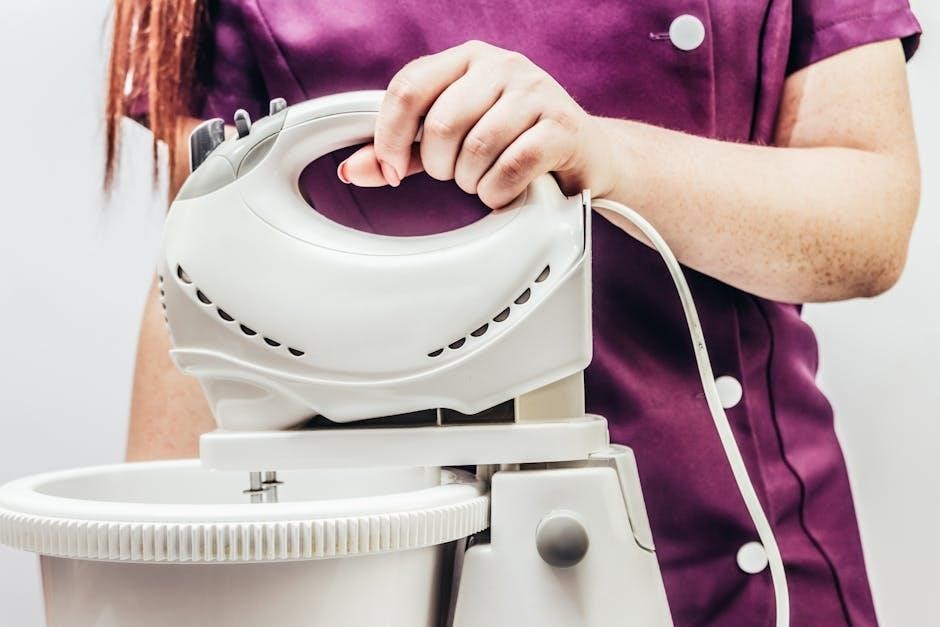
coaguchek xs instruction manual
CoaguChek XS Instruction Manual: A Comprehensive Guide
Welcome to your comprehensive guide to the CoaguChek XS system! This manual will provide detailed instructions on how to use and maintain your device, ensuring accurate monitoring of your coagulation status. Please read thoroughly before operating the CoaguChek XS for optimal results and safety.
The CoaguChek XS system is a portable device designed for convenient self-testing of blood coagulation, specifically Prothrombin Time (PT/INR). It’s intended for patients on oral anticoagulants who need to monitor their blood clotting time regularly. This system empowers individuals to manage their condition from the comfort of their homes, reducing the need for frequent visits to healthcare facilities.
The CoaguChek XS system includes the CoaguChek XS meter, CoaguChek XS PT test strips, and a lancing device, such as the CoaguChek Softclix, along with lancets. This user-friendly design ensures accurate and reliable results with minimal effort. The system requires only a small drop of capillary blood, obtained from a simple finger prick, making the process less invasive and more accessible.
This instruction manual provides all the necessary information for operating and maintaining the CoaguChek XS system. By following the guidelines within, users can confidently perform tests, interpret results, and ensure the longevity of their device. The CoaguChek XS helps in maintaining optimal therapeutic ranges and provides instant results.
Intended Use of the CoaguChek XS
The CoaguChek XS system is specifically designed for in vitro diagnostic use by patients who are undergoing oral anticoagulation therapy. It measures the Prothrombin Time (PT/INR), allowing patients and healthcare professionals to monitor the effectiveness of anticoagulant medications such as warfarin.
This system is intended for self-testing by patients who have been properly trained by their healthcare provider. Regular monitoring enables timely adjustments to medication dosage, reducing the risk of thromboembolic events or bleeding complications. The CoaguChek XS provides rapid results, facilitating immediate clinical decisions.
It is important to note that the CoaguChek XS should only be used under the guidance of a physician or qualified healthcare professional. The results obtained from the CoaguChek XS should always be interpreted in conjunction with other clinical information and should not be the sole basis for making treatment decisions. The system is intended for single-patient use and should not be shared to prevent the risk of cross-contamination. Prior to use, carefully review and adhere to all instructions provided in this manual.

Components of the CoaguChek XS System
The CoaguChek XS system comprises several key components: the CoaguChek XS meter itself, CoaguChek XS PT test strips, and a lancing device, typically with lancets like the CoaguChek Softclix, crucial for blood sample collection and accurate testing.
CoaguChek XS Meter
The CoaguChek XS meter is the core of the coagulation monitoring system, a handheld device designed for point-of-care testing of prothrombin time (PT/INR). This compact meter facilitates convenient and rapid blood coagulation analysis, enabling users to manage their oral anticoagulant therapy effectively from the comfort of their homes.
This user-friendly device provides quantitative measurements, allowing healthcare professionals and patients to monitor the effectiveness of anticoagulant medications like warfarin. Its portability and ease of use make it suitable for self-testing, empowering individuals to take control of their health. The meter requires only a small blood sample, obtained via a simple finger prick.
The CoaguChek XS meter features a clear display that presents test results in seconds, ensuring timely intervention if necessary. Proper handling, care, and regular maintenance are crucial to ensure accurate readings and prolong the lifespan of this essential component of the CoaguChek XS system.
Always refer to the complete CoaguChek XS system manual for detailed instructions, safety precautions, and troubleshooting tips related to the meter’s operation and storage.
CoaguChek XS PT Test Strips
CoaguChek XS PT test strips are essential consumables designed for use with the CoaguChek XS meter to determine prothrombin time (PT/INR) values. These single-use strips are engineered with specific reagents that react with the blood sample to measure the clotting time, providing accurate and reliable results for monitoring anticoagulant therapy.
Each test strip is individually packaged to maintain its integrity and prevent contamination, ensuring the accuracy of the test. Proper storage is critical; test strips should be kept in a cool, dry place and away from direct sunlight. Always check the expiration date on the packaging before use, as expired strips can lead to inaccurate readings.
To perform a test, insert the strip into the CoaguChek XS meter and apply a small drop of blood to the designated area on the strip. The meter then analyzes the sample and displays the PT/INR result.
Handling the test strips with clean, dry hands is important to avoid contamination. Discard used test strips properly in accordance with local regulations. Refer to the CoaguChek XS system manual for detailed instructions and important safety information regarding the use and disposal of PT test strips.
Lancing Device and Lancets (e.g., CoaguChek Softclix)
The lancing device, often paired with lancets like the CoaguChek Softclix, is a crucial component of the CoaguChek XS system. It facilitates obtaining a small blood sample from the fingertip for PT/INR testing. The lancing device is designed to minimize discomfort, making the blood sampling process easier and more manageable, especially for frequent testing.
The CoaguChek Softclix lancing device features adjustable penetration depth settings, allowing users to customize the lancet’s entry based on their skin type. This helps ensure that just enough blood is collected without causing unnecessary pain.
Lancets are single-use, sterile needles that puncture the skin to draw blood. It is imperative to use a new lancet for each test to prevent infection and ensure accurate results. Used lancets should be disposed of properly in a sharps container, adhering to local regulations for biohazard waste.
Before using the lancing device, carefully read the manufacturer’s instructions. Proper technique and hygiene, including washing hands before testing, are essential to reduce the risk of infection. Regular cleaning of the lancing device is also recommended. Always consult the CoaguChek XS system manual for comprehensive guidance on the use and care of the lancing device and lancets.

Step-by-Step Instructions for Performing a Test
This section details the process of using the CoaguChek XS system. It covers preparing the lancing device, applying the blood sample accurately to the test strip, and correctly interpreting the results displayed on the CoaguChek XS meter screen.
Preparing the Lancing Device
Proper preparation of the lancing device is crucial for a successful and safe blood sample collection. Begin by ensuring you have a compatible lancing device, such as the CoaguChek Softclix, and a supply of sterile lancets. Open the lancing device by removing the cap, typically achieved by twisting or pulling it off, depending on the model.
Next, insert a new, sterile lancet into the device. Ensure the lancet is fully inserted and clicks into place, securing it within the mechanism. Remove the protective cap from the lancet, preparing it for use. Be cautious to avoid accidental needle sticks during this process.
Adjust the depth setting on the lancing device according to your skin type and comfort level. A lower setting is suitable for delicate skin, while a higher setting may be necessary for thicker skin to obtain an adequate blood sample. After setting the depth, cock the lancing device by pulling back or pressing a button, as indicated by your device’s instructions;
The lancing device is now prepared for use. Remember, always use a fresh lancet for each test to prevent infection and ensure accurate results. Do not pre-lance your finger; wait until instructed by the CoaguChek XS meter. With these steps completed, you are ready to proceed with the blood sample collection.
Applying Blood Sample to the Test Strip
After successfully obtaining a blood drop from your fingertip, the next critical step is applying the blood sample correctly to the CoaguChek XS PT test strip. Ensure that the CoaguChek XS meter is ready and displaying the message indicating it’s time to apply the blood.

Gently bring the blood drop to the designated sample application area on the test strip. This area is usually marked with a specific target or channel. The blood drop should be applied to the edge of the channel, allowing it to be drawn into the test strip by capillary action. Do not apply the blood drop to the top of the strip.
Ensure the blood drop is of sufficient size to completely fill the sample area. If the initial drop is too small, gently massage your finger to encourage another drop to form. Avoid squeezing your finger excessively, as this can dilute the sample with tissue fluid, leading to inaccurate results. The meter will usually beep or display a visual confirmation once enough blood has been applied.
Once the blood has been applied, avoid moving or disturbing the meter and test strip during the analysis process. The CoaguChek XS meter will begin the measurement automatically. The meter will display the test result within a few minutes. Properly applying the blood sample is crucial for accurate and reliable coagulation monitoring.
Reading and Interpreting Results
Once the CoaguChek XS meter has completed its analysis, the test result will be displayed on the screen. The result is typically shown as an INR (International Normalized Ratio) value, which is a standardized measurement of prothrombin time used to monitor the effectiveness of anticoagulant therapy, particularly warfarin.
The INR value indicates how long it takes for your blood to clot compared to the average clotting time. A higher INR value means your blood is taking longer to clot, indicating a greater degree of anticoagulation. Conversely, a lower INR value means your blood is clotting faster.
It is crucial to understand the target INR range recommended by your healthcare provider. This range is specific to your medical condition and the anticoagulant medication you are taking. The result that falls within this range indicates that your anticoagulation is at the desired therapeutic level.
If your INR result is outside the recommended range, do not adjust your medication dosage without consulting your healthcare provider. Contact your doctor for guidance on how to manage your anticoagulation therapy based on the test result. They may recommend a medication adjustment or further testing to ensure your safety and well-being. Always record your INR results for tracking.

Care and Maintenance of the CoaguChek XS
Proper care and maintenance of your CoaguChek XS system are essential for ensuring accurate and reliable results. Always store the meter and test strips in a cool, dry place, away from direct sunlight and extreme temperatures. Avoid exposing the meter to excessive moisture or humidity, as this can damage the electronic components.
Clean the exterior of the CoaguChek XS meter regularly with a soft, damp cloth. Do not use harsh chemicals, solvents, or abrasive cleaners, as they can damage the meter’s casing. Ensure that no liquid enters the test strip port or any other openings on the meter.
The CoaguChek XS test strips are sensitive to environmental conditions and should be stored in their original container with the lid tightly closed. Do not use expired test strips, as they may produce inaccurate results. Check the expiration date on the test strip container before each use.
Dispose of used lancets and test strips properly in accordance with local regulations for biohazardous waste. Do not reuse lancets, as this can increase the risk of infection. Regularly check the meter’s display and battery level to ensure it is functioning correctly. Replace the batteries as needed to maintain optimal performance.